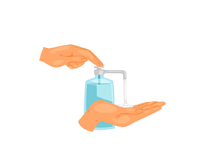Salmeterol
Salmeterol is a long-acting beta-agonist (LABA) medication used to manage symptoms of asthma and chronic obstructive pulmonary disease (COPD). It works by relaxing the muscles around the airways, helping to open them up and make breathing easier. Salmeterol is not a rescue medication but is used regularly to control asthma and COPD symptoms, helping to reduce the frequency of asthma attacks and shortness of breath. It is commonly prescribed as an inhaler and is used in combination with other medications for optimal treatment of respiratory conditions.
Uses of Salmeterol
- Prevents asthma attacks and shortness of breath in asthma patients
- Relieves symptoms of chronic obstructive pulmonary disease (COPD)
- Helps improve lung function and reduce wheezing and difficulty breathing
- Used in combination with other medications such as inhaled corticosteroids for better asthma control
How Salmeterol Works
Salmeterol works by stimulating beta-2 receptors in the smooth muscle of the airways, leading to muscle relaxation and dilation of the airways. This helps to prevent bronchoconstriction, which can cause wheezing, shortness of breath, and difficulty breathing. Salmeterol’s effects last for up to 12 hours, making it an effective long-term medication for managing asthma and COPD symptoms.
Benefits of Salmeterol
- Provides long-lasting relief from asthma and COPD symptoms for up to 12 hours
- Reduces the frequency of asthma attacks and improves breathing
- Helps patients achieve better control of their respiratory conditions when used regularly
- Can be combined with other medications like inhaled corticosteroids for comprehensive asthma management
How to Take Salmeterol
Salmeterol is usually inhaled using a metered-dose inhaler (MDI) or a dry powder inhaler (DPI). The typical dosage involves taking one inhalation twice daily, once in the morning and once in the evening, as prescribed by your healthcare provider. It is important to use Salmeterol regularly, even if you feel fine, to help prevent symptoms. Always follow your doctor’s instructions on the correct usage and dosage to ensure optimal benefit.
Type of Dosage Available
- Metered-dose inhaler (MDI)
- Dry powder inhaler (DPI)
Side Effects of Salmeterol
- Headache
- Throat irritation or hoarseness
- Muscle cramps
- Increased heart rate or palpitations
- Rare: allergic reactions, such as swelling or rash
Safety Advice
- Salmeterol is not a rescue medication and should not be used for acute asthma attacks
- Consult your doctor if you have a history of heart problems or high blood pressure
- Do not exceed the prescribed dosage, as overuse can lead to side effects such as increased heart rate
- Always use Salmeterol as part of a comprehensive treatment plan, often in combination with inhaled corticosteroids
- If you experience any severe side effects, such as difficulty breathing, seek medical attention immediately
Frequently Asked Questions (FAQs)
Q: What is Salmeterol used for?
A: Salmeterol is used to prevent asthma attacks and manage chronic obstructive pulmonary disease (COPD) symptoms by helping to open the airways and improve breathing.
Q: How should I take Salmeterol?
A: Salmeterol is inhaled using a metered-dose inhaler or dry powder inhaler. The typical dosage is one inhalation twice daily, as prescribed by your doctor.
Q: Can Salmeterol be used during an asthma attack?
A: No, Salmeterol is not a rescue medication. It should be used regularly to prevent asthma attacks, but a fast-acting inhaler should be used for acute symptoms.
Q: What are the side effects of Salmeterol?
A: Common side effects may include headache, throat irritation, muscle cramps, and increased heart rate. Contact your doctor if you experience severe side effects.
Q: Is Salmeterol safe for long-term use?
A: Yes, when used as prescribed and in combination with other medications like inhaled corticosteroids, Salmeterol is safe for long-term use to control asthma and COPD symptoms.
Related Salt
Download India's most affordable pharmacy app
- Compare with medicine prices
- Save upto 90% on your medicine bills

Temperature Controlled storage and delivery

Regular Sanitization

Disinfected Packaging














 Added!
Added!